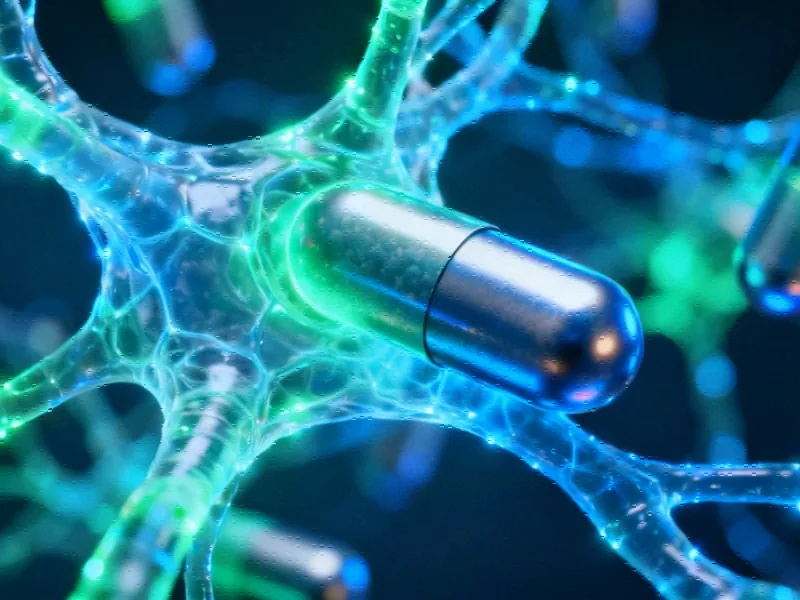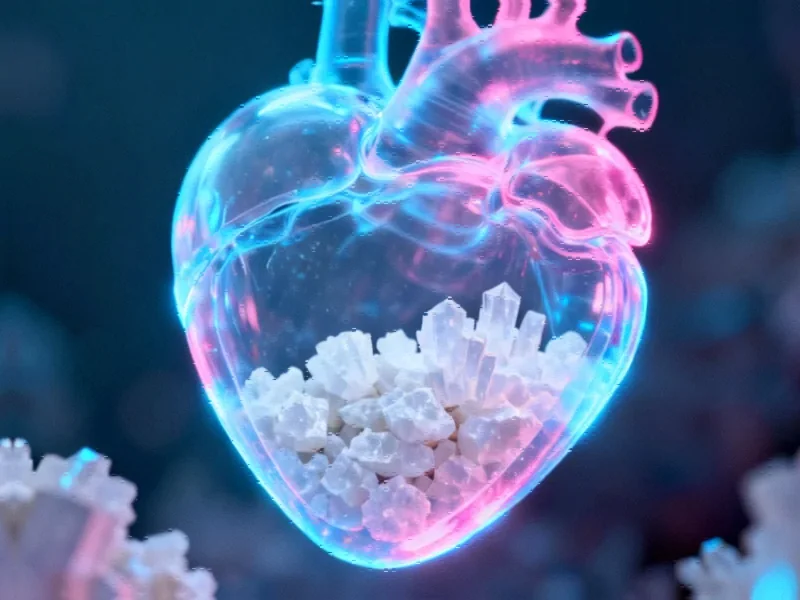The Convergence of Two Technological Frontiers
Neurodegenerative diseases represent one of modern medicine’s most complex challenges, affecting millions worldwide with conditions like Alzheimer’s, Parkinson’s, and ALS. Traditional treatment approaches have struggled to effectively address these multifaceted disorders, but a revolutionary convergence of nanomedicine and artificial intelligence is creating unprecedented opportunities for breakthrough therapies. This interdisciplinary approach represents a paradigm shift from merely managing symptoms to potentially modifying disease progression itself.
Understanding the Blood-Brain Barrier Challenge
The blood-brain barrier (BBB) has long been the primary obstacle in treating neurological disorders. This highly selective membrane protects the brain from harmful substances but also prevents approximately 98% of small-molecule drugs and 100% of large-molecule neurotherapeutics from reaching their intended targets. Conventional drug delivery methods face additional challenges including rapid clearance, off-target toxicity, and inability to achieve therapeutic concentrations in specific brain regions. These limitations have prompted researchers to explore innovative delivery systems that can navigate the brain’s complex defense mechanisms.
Nanomedicine’s Precision Approach
Nanomedicine offers sophisticated solutions to these longstanding delivery challenges. Engineered nanoparticles can be designed with specific properties that enable targeted delivery, controlled release, and improved bioavailability of therapeutic agents. These nanocarriers can be functionalized with targeting ligands that recognize and bind to receptors on the BBB, facilitating transport into the brain parenchyma. The precision engineering of these particles allows for customization of size, surface charge, coating materials, and release kinetics to optimize therapeutic outcomes. Recent AI-driven nanomedicine breakthroughs have accelerated this optimization process significantly.
The AI and Imaging Revolution
While nanomedicine provides the delivery vehicle, artificial intelligence and molecular imaging serve as the navigation system. Advanced imaging techniques including MRI, PET, and contrast-enhanced imaging enable researchers to monitor exactly where nanomedicines travel, how much reaches the target tissue, and what biological effects they produce. When combined with machine learning algorithms, this imaging data becomes a powerful feedback mechanism for continuous optimization. AI models can analyze patterns of nanoparticle distribution, predict optimal formulation parameters, and even personalize treatment approaches based on individual patient characteristics. These advanced computational approaches represent the cutting edge of therapeutic development.
The Design-Image-Optimize Cycle
The most promising aspect of this integrated approach is the establishment of a continuous improvement cycle: design → image → AI-driven feedback → redesign. This iterative process allows researchers to rapidly optimize nanomedicine formulations based on real-world performance data. For instance, when initial nanoparticle distributions prove suboptimal in animal models, imaging data can pinpoint exactly where the delivery failed, and AI algorithms can suggest specific modifications to particle architecture. This feedback loop dramatically accelerates the development timeline while improving the likelihood of clinical success. The methodology reflects broader precision management trends seen across multiple scientific disciplines.
Key Advancements and Applications
The integration of AI and nanomedicine has yielded several critical advancements in neurodegenerative disease treatment:
- Multimodal Targeting: Nanocarriers engineered to sequentially overcome multiple barriers—BBB penetration, neuronal targeting, and timed drug release—with imaging validation at each stage
- Personalized Optimization: AI models trained on patient-specific imaging data can predict optimal formulation parameters for individual biological contexts
- Real-time Adjustment: The potential for treatment regimens that adapt based on continuous imaging feedback and AI analysis
- Accelerated Development: Machine learning dramatically reduces the time required to identify promising nanoparticle candidates from thousands of possible configurations
Overcoming Implementation Challenges
Despite the tremendous promise, significant challenges remain in translating these technologies from laboratory to clinic. Particle safety, long-term accumulation effects, immune responses, and scalable manufacturing present substantial hurdles. Additionally, the field requires shared machine learning imaging datasets, open standards, and robust computational pipelines capable of handling patient heterogeneity. Regulatory frameworks must evolve to accommodate these innovative approaches, while ensuring patient safety remains paramount. These challenges reflect the complex nature of technology implementation in regulated environments.
Future Directions and Clinical Translation
Research teams are already advancing toward next-generation solutions, including molecular nanorobots deliverable via nasal spray and AI algorithms that predict patient-specific dosing requirements. The development of AI models trained on imaging patterns from Alzheimer’s and Parkinson’s patient cohorts promises to further refine delivery parameters. Concurrently, collaborations with clinicians are establishing imaging endpoints that will support regulatory approval processes. These efforts represent the forefront of innovative approaches to longstanding medical challenges.
Interdisciplinary Collaboration as the Path Forward
The successful implementation of AI-enhanced nanomedicine requires unprecedented collaboration across traditionally separate disciplines. Materials scientists must partner with imaging specialists, AI researchers need to work alongside clinical neurologists, and regulatory experts should engage early in the development process. This interdisciplinary approach mirrors successful strategies seen in other industry transformations where technological convergence drives innovation.
Conclusion: Toward a New Therapeutic Paradigm
The integration of artificial intelligence with advanced nanomedicine represents more than just incremental progress—it signals a fundamental shift in how we approach neurodegenerative diseases. By combining precise drug delivery with intelligent feedback systems, researchers are moving closer to therapies that can truly modify disease progression rather than simply manage symptoms. While challenges remain, the building blocks for this transformative approach are already in place, waiting for the scientific community to build the necessary bridges between laboratory innovation and clinical practice. The future of neurological treatment appears poised for a revolution driven by intelligent design and precise delivery.
This article aggregates information from publicly available sources. All trademarks and copyrights belong to their respective owners.
Note: Featured image is for illustrative purposes only and does not represent any specific product, service, or entity mentioned in this article.



